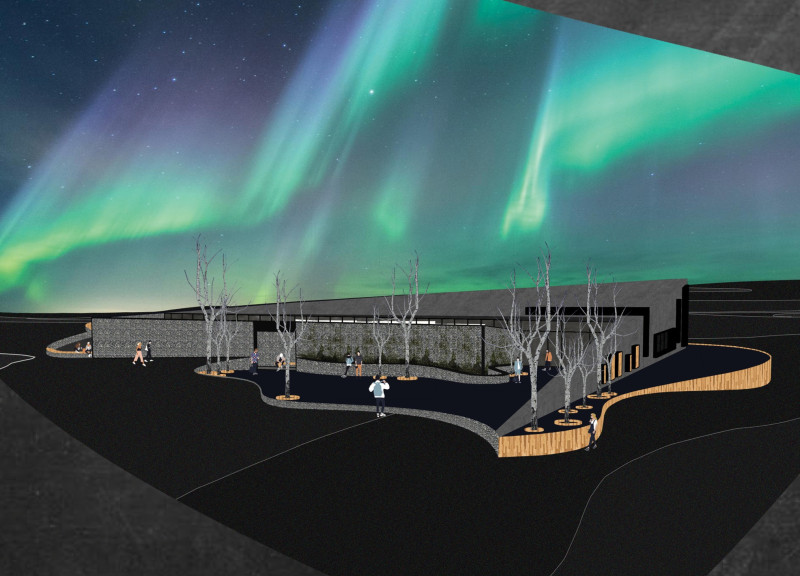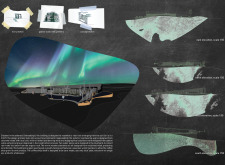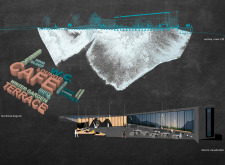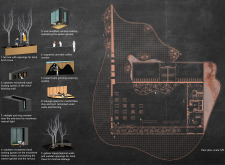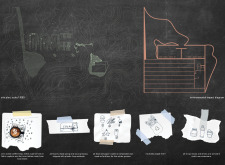5 key facts about this project
The design in Dimmuborgir is characterized by its careful relationship with the surrounding volcanic landscape, resembling a rock formation that appears to rise naturally from the ground. Serving as a community hub, it features a coffee shop along with various functional spaces and highlights the importance of sustainable practices. The concept draws on local geology, creating an inviting environment that reflects its context.
Materials and Construction
The exterior load-bearing walls are made from concrete mixed with local soil. This choice creates a strong connection to the landscape. Additional load-bearing walls utilize gabion construction, using local gravel that was removed during site preparation. This method helps reduce environmental impact while enhancing the building's strength.
Water Management and Green Spaces
An important part of the design includes two water pools located in the courtyard, designed to collect rainwater and snow from the angled roof. This feature not only supports water management but also emphasizes eco-friendly practices. The large winter garden in the south-facing area allows the coffee shop to grow its own produce, strengthening the connection to nature and promoting sustainable food options.
Spatial Organization
The layout includes varied functional spaces such as a café, lounge, kitchen, exhibition areas, offices, storage, and a playground. This variety accommodates different activities, making it a central gathering place. Key interior elements include a terrace with openings for local birch trees, outdoor seating made from reclaimed wood, and skylights that bring in natural light throughout the building.
Operational Sustainability
The coffee shop follows zero waste principles by using metal cups and fabric napkins instead of disposable options. All food comes from local producers who practice plastic-free shipping. This approach prioritizes composting, with food and paper waste being used as fertilizer in the winter garden. By banning plastic bags and offering takeout meals in reusable containers, the design demonstrates a commitment to reducing its environmental footprint.
The design encourages interaction between indoor and outdoor spaces. Wall-mounted seating offers views of the winter garden, enriching the user experience and fostering a strong connection to the surrounding nature.


